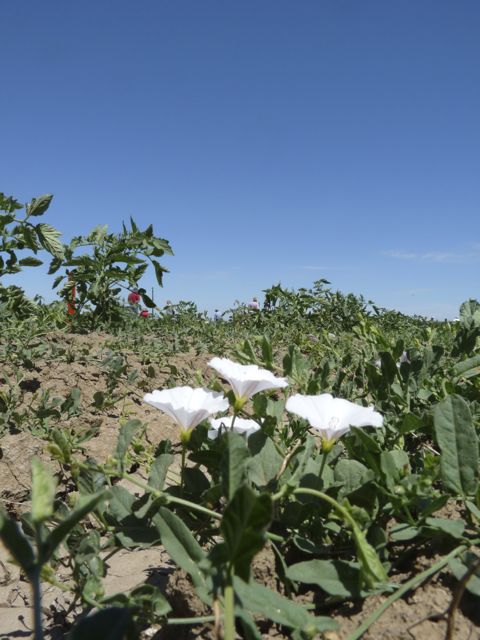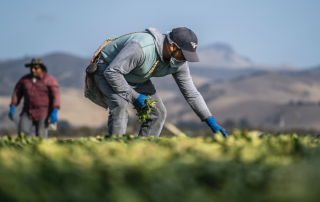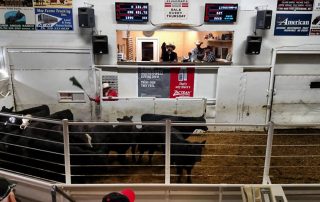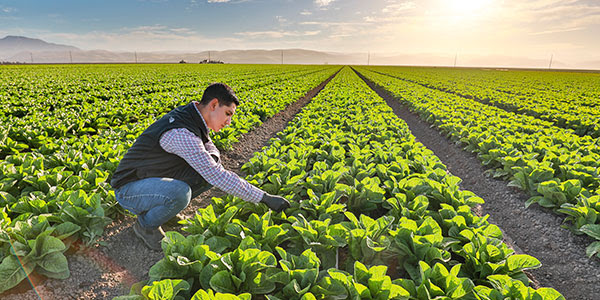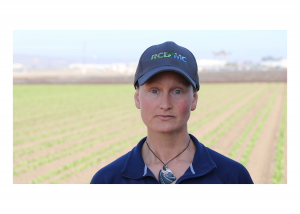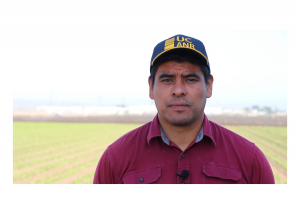Field Bindweed And Tomatoes
Field Bindweed Yield Impacts on Processing Tomatoes May be Less Than Expected
By Scott Stoddard, County Director and UCANR Farm Advisor, Merced County
Field bindweed (Convolvulsus arvensis) is considered by many tomato growers to be the most problematic of all weeds in California production areas. Indeed, field bindweed and the closely related morningglory weeds were ranked the 8th most troublesome weeds in North America in a recent survey by the Weed Science Society of America (Van Wychen, 2019).
The rapid adoption of drip irrigation and the economic necessity of maintaining the beds and replanting with only minimal tillage for multiple seasons in processing tomatoes has created a system where field bindweed has become more prevalent. Field bindweed is extremely difficult to control because it propagates from seed and vegetatively from buds formed in the roots. Seedlings can be controlled with tillage when very young, but they become perennial very rapidly. Chemical control of seedlings is possible, but established plants are much more difficult to control.
Established plants often have a large root system relative to the amount of top growth, and thus are extremely tolerant of post emergence herbicides such as carfentrazone (Shark), glufosinate (Rely), and glyphosate (Roundup).
Bindweed is a headache not only for its persistent and pernicious growth habit and ability to reduce tomato yields, but also because it can physically stop a processing tomato harvester in the field. Vigorously growing vines can become entangled around the shaker and conveyor belts, requiring the equipment operator to shut down and manually clear out the foliage.
Several years ago, myself and other UC researchers conducted herbicide trials evaluating field bindweed control — with marginal success. In a given year and location, most of the registered herbicides in tomatoes gave only temporary suppression – about 40 – 80% bindweed control at 8 weeks after transplanting. Best results were observed where herbicides were stacked: trifluralin (Treflan) pre-plant incorporated followed by rimsulfuron (Matrix) post. Glyphosate helped in situations where the bindweed emerged early and could be applied before transplanting.

